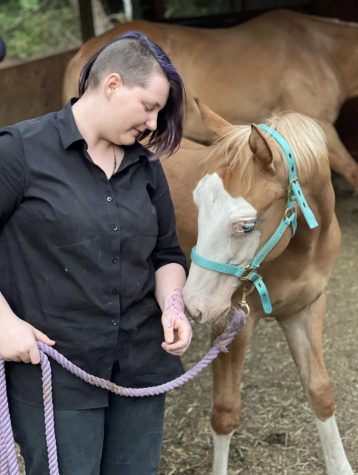What is The Uncanny Valley?

January 20, 2023
(Image: Facial Reconstruction of Windy Point Jane Doe Crime Case)
“Used in reference to the phenomenon whereby a computer-generated figure or humanoid robot bearing a near-identical resemblance to a human being arouses a sense of unease or revulsion in the person viewing it.” – The Oxford Dictionary
The Uncanny valley is described as the feeling of unease or fear when seeing something that looks human but is just wrong enough that it seems a threat. There are many theories as to what caused this effect and why it is so deeply rooted in our minds, such as the idea that long ago early in human history something human looking but dangerous caused such an effect that it shaped the way we evolved, but the most likely theory would be the “Evolutionary” theory.
Diseases such as Rabies, Malaria, Tuberculosis, and Leprosy have been around as long as if not longer than humans, and all have physical effects that match the descriptions of the uncanny valley. These diseases make your skin paler or discolored, you become weaker or more aggressive, and you begin to act strangely as the diseases begin to take effect. Because these diseases evolved with humanity they may have had an effect on our evolution, changing the way our brain functioned.
In early human history if you were out hunting for food or scavenging, and your friend came up to you saying they were bit by something and their head hurt you’d probably take them back to camp for healers to look at them. After a few hours they begin acting weird, they won’t go near the lake or any body of water for that matter, they begin to talk oddly, they pace, and shamble aimlessly while muttering to themselves. After a day they’re skin is pale and sickly, they’re foaming at the mouth, wide eyed and jolty, as well as aggressive. They lunge at anyone who gets near, their eyes darting from side to side latching onto anything that moves near them. Just as you begin to realize that this isn’t your friend anymore they convulse, falling to the ground twitching as they go into cardio-respiratory arrest. After a few minutes they go limp, eyes open and still foaming at the mouth.
What was just described was the progression of “Furious Rabies’ ‘, the Rabies type that makes up %80 of all Rabies attacks. This is an understandably terrifying disease that has survived 4000 years alongside human medical advancements, even today without a Rabies vaccine the disease is deadly. The virus slowly spreads via infected saliva entering your body, causing irreversible damage and death to your brain and spinal cord.
A disease like this that was so dangerous that if contracted, early humans would commit suicide to avoid the death, would in fact trigger the warning signs in our brain after a while. The fact that the disease is so old, and our brain’s ability to recognize patterns means that after a long period of time our brains would evolve to see the symptoms as a threat. Pale skin? Could be dangerous. Foaming at the mouth? Could be dangerous. Your brain interprets these things as a threat due to the fact that it evolved alongside this disease, a disease that if contracted meant inevitable death.



